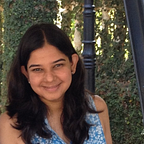5 Tips to Read your Way to Better Writing
How to read with intention.
“If you don’t have time to read, you don’t have the time (or the tools) to write. Simple as that.” — Stephen King
You know what’s great? Relaxing in a squishy armchair with a book and a lovingly-chosen notebook and pen. You know what’s even greater (and, amazingly, not a scam?) That writers can call reading work. When you combine the two into the simple act of reading with intention, you get a masterclass in the nuts and bolts of writing: a golden opportunity to learn from those who have been widely read and published; from the very best.
So, how does one ‘read with intention?’ Well, I like to think of stories as living, breathing organisms. Reading with intention is studying each of these stories under a microscope: observing how all the little cells (words, characters, plot etc) come together to create a perfect, seamless, multi-faceted whole. And here’s the best part: once you know what those dynamic story-cells are capable of, you can use them to create a powerful tale infused with its own unique DNA: your voice. Fun, right?
Here are some methods that have greatly helped me ‘read like a writer’:
1. Read Slowly: Savor the Words
Words are a writer’s raw material. Good writing is carefully choosing each word, paying attention to both its meaning and sound.
For example: the phrase “gawky raucous crows” — doesn’t that sound cacophonous, much better than “awkward loud crows?” That’s why Lucia Berlin used that musical phrase in her brilliant A Manual for Cleaning Women.
When you read (and especially when you read poetry), study each word: its shades of meaning, how it actually sounds, what it reveals, and how it stitches into other words to form a dazzling sentence. If a sentence delights, ask yourself: why do I love this sentence? How does it create its effect? How do its rhythm, grammar and punctuation work? How would I have written it differently? And (almost invariably) why are the author’s choices better? (For an exhilarating study of word choice in short prose, I highly recommend Xu Xi’s Famine.)
2. Make Notes: So You Remember What Worked and Why
Virginia Woolf famously loved to “read — with a pen — following the scent”. And who wouldn’t? It’s exciting to follow the scent of a story, peeling away its layers to understand its heart.
Apart from analysing much-talked-about ingredients like character, plot, setting, exposition, conflict, theme, dialogue and other literary devices*, I like to jot down my thoughts and questions about the story. I especially like to study translations. If the book is a translation, or aims to capture a vernacular, how have the original language’s rhythms and idioms been preserved?
3. Imitate: But Don’t Steal
“It’s like watching someone dance and then secretly, in your own room, trying out a few steps. I often think of learning to write by reading as something like the way I first began to read.” — Francine Prose
Francine Prose has got your back! So, if a particular style or plot structure delights you, go ahead and imitate it. Test the voice, figure out what you like about it. Often, in time, you’ll find your own voice naturally permeating through, creating something both new and distinctive.
4. Read Widely: Read Internationally and Across Genres
Stories are ultimately about the human condition. That means no story is truly insulated from the world. So, read widely, across genres and across cultures. Because the more facets of life you’re exposed to, the more themes, questions, ideas and story structures will come to you.
For example: Yom, a television series I co-created for Disney, combined the superhero genre with the philosophy of yoga. Reading A Room of One’s Own led to a story about the amazing, often-overlooked narratives of crowded lives. Some of my favourite Sesame Street scripts are based on traditional Indian folktales. So, go forth, read widely, and engender fusion.
5. Enjoy the Process: Reading is Meant to Be Fun
If this is all starting to sound suspiciously like a lot of work, don’t worry. Simply set aside time to ‘read like a writer’, and read the rest of the time for good old pleasure.
Also: relax. Nobody gleans a lot in one reading (and if they do, I simply refuse to acknowledge it.) For me, the intricacies of a piece usually emerge on re-reading and some very confused thinking. I glance at my notes, flip through the story again, and watch, amazed, as it explodes with new meaning. Once the febrile jealousy passes (always temporarily), I discover I’m not only a better writer, but that I’ve also experienced one of reading’s greatest joys: beauty.
“We live only to discover beauty. All else is a form of waiting.” — Kahlil Gibran
I hope you discover beauty in both your reading and your writing. Good luck!
*For a detailed analysis of these topics, you could check out books like Bedford’s Introduction to Literature or any of the fine books here.
